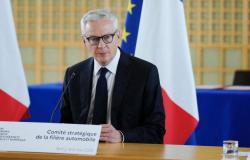Maghreb diplomacy is undoubtedly a mosaic of theatrical gestures and diplomatic dance steps where each actor tries not to step on the toes of the others, except when absolutely necessary, of course.
Maghreb diplomacy, always so picturesque and unpredictable, recently offered us a spectacle worthy of a dramatic comedy. The Libyan Presidential Council, in a post-tripartite meeting including Algeria and Tunisia, decided to remind everyone of the importance of the Arab Maghreb Union (AMU).
The Libyan Presidential Council’s enthusiasm for sending missives across the Maghreb almost seems like a desperate quest to remind everyone that the AMU is not entirely a relic of the past. Barely had the curtains fallen on the “Maghrebi” meeting in Tunisia which brought together Algeria, Tunisia and Libya, when the President of the Libyan Presidential Council, Mohamed el-Menfi, decided to undertake an epistolary tour.
With a haste worthy of a soap opera, envoys were dispatched to Rabat and Nouakchott to raise the standard of Maghreb unity. Meanwhile, Tunisia seemed to have missed the memo, or perhaps just lost the Maghreb postal address. According to the Mauritanian press agency, a letter was delivered to President Mohamed Ould Ghazouani, emphasizing the importance of reviving the Maghreb Union and strengthening bilateral cooperation.
Simultaneously, another envoy made a stopover in Rabat to deliver a similar note to King Mohammed VI, as reported by MAP (Agence Maghreb Arabe Presse) two days ago. The aspiration for regional cooperation, particularly on irregular migration, was clearly the main course of this tripartite meeting announced with pomp by the Tunisian presidency. However, the absence of Tunisia in this postal ballet was perceived by some as a deliberate act of omission, or even an attempt to hinder the dream of union.
Tunisian political analyst Moncef Selimi’s comment did not lack pizzazz, suggesting that President Kaïs Saïed’s almost cosmic alignment with Algeria is not only geographical but also ideological. According to him, the recent tripartite meetings are nothing other than a repetition of the old Algerian routine in its antagonism towards Morocco.
Meanwhile, relations between Tunisia and Morocco appear to be frozen in a prolonged diplomatic winter, exacerbated by the continued absence of ambassadors between the two countries. Almost total radio silence came from Tunis, leaving a mystery surrounding his real intentions or his interest in the Union. The latest trio of meetings have done little more than press the pause button, with analyst Selimi predicting that this diplomatic freeze will continue.
Selimi does not hesitate to describe the tripartite meeting as an Algerian routine aimed at thwarting the rise of the Maghreb Union, a play in which Morocco often finds itself in the role of the rival. This situation reveals a complex geopolitical dynamic where old antagonisms resurface, even in attempts at collaboration.
In this episode of the North African series, we observe a ballet in which each step and each note seems calculated to either bring the actors closer together or further apart. These diplomatic exchanges, which resemble a well-orchestrated ballet, underline Libya’s commitment to pushing for increased regional integration.
In short, this series of events highlights the extent to which diplomacy in the Maghreb region can be laced with contradictions and theatricality. Each movement, each letter sent, is a scene in an ongoing saga where each country plays for both its national interests and broader regional issues. The question remains: will this diplomatic dance lead to true harmony or is it only the prelude to other episodes of discord?






